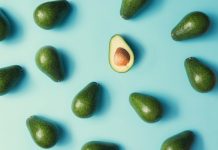
For centuries, shipworms have been a menace to sailors and structures alike.
These marine mollusks damaged ancient Greek ships, contributed to the sinking of the Spanish Armada, wrecked Christopher Columbus’s ships, and even caused the collapse of San Francisco Bay’s wharves.
Despite their notorious reputation, scientists couldn’t figure out exactly how shipworms cause so much destruction—until now.
A team of researchers from the University of Massachusetts Amherst, the University of Plymouth, the University of Maine, and UMass Chan Medical School have finally solved the mystery.
They discovered that shipworms have a special group of microbes living in a previously overlooked part of their gut called the “typhlosole.”
These microbes produce the enzymes needed to break down lignin, the toughest part of wood.
“Shipworms are fascinating creatures,” says Reuben Shipway, a co-author of the research published in the journal International Biodeterioration and Biodegradation.
“They are found all over the world’s oceans and have significantly impacted history.
They also play a crucial role in aquatic ecosystems by recycling carbon. It’s amazing that we didn’t fully understand how they do this until now.”
Wood is a remarkable material—flexible, strong, and packed with nutritious cellulose. However, this cellulose is protected by lignin, a tough substance that acts like a protective shell.
Only a few organisms, like termites, can digest lignin, thanks to specialized microbes in their guts.
For a long time, scientists thought the shipworm’s digestive system was nearly sterile, raising the question: How do shipworms digest wood?
Barry Goodell, the lead author of the study, and Reuben Shipway have spent almost ten years investigating this puzzle. They tested many theories but couldn’t uncover the secret of the shipworms’ destructive abilities.
“We decided to take another close look at the shipworm’s gut,” Goodell explains. “It turns out that previous researchers missed something important.”
Their detailed examination revealed the typhlosole, a unique structure in the shipworm’s digestive system. It looks like an upside-down Salvador Dali mustache.
Earlier scientists thought it just helped mix food, but when Goodell and Shipway conducted precise experiments and used advanced genetic analysis techniques, they found hidden clusters of bacteria. These bacteria have the ability to produce enzymes that digest lignin.
This discovery explains how shipworms can break down wood and cause so much damage. Understanding this process not only solves a long-standing mystery but also highlights the importance of these creatures in marine ecosystems.
Shipworms, once known only for their destructive power, are now recognized as key players in the natural recycling of carbon in our oceans.



